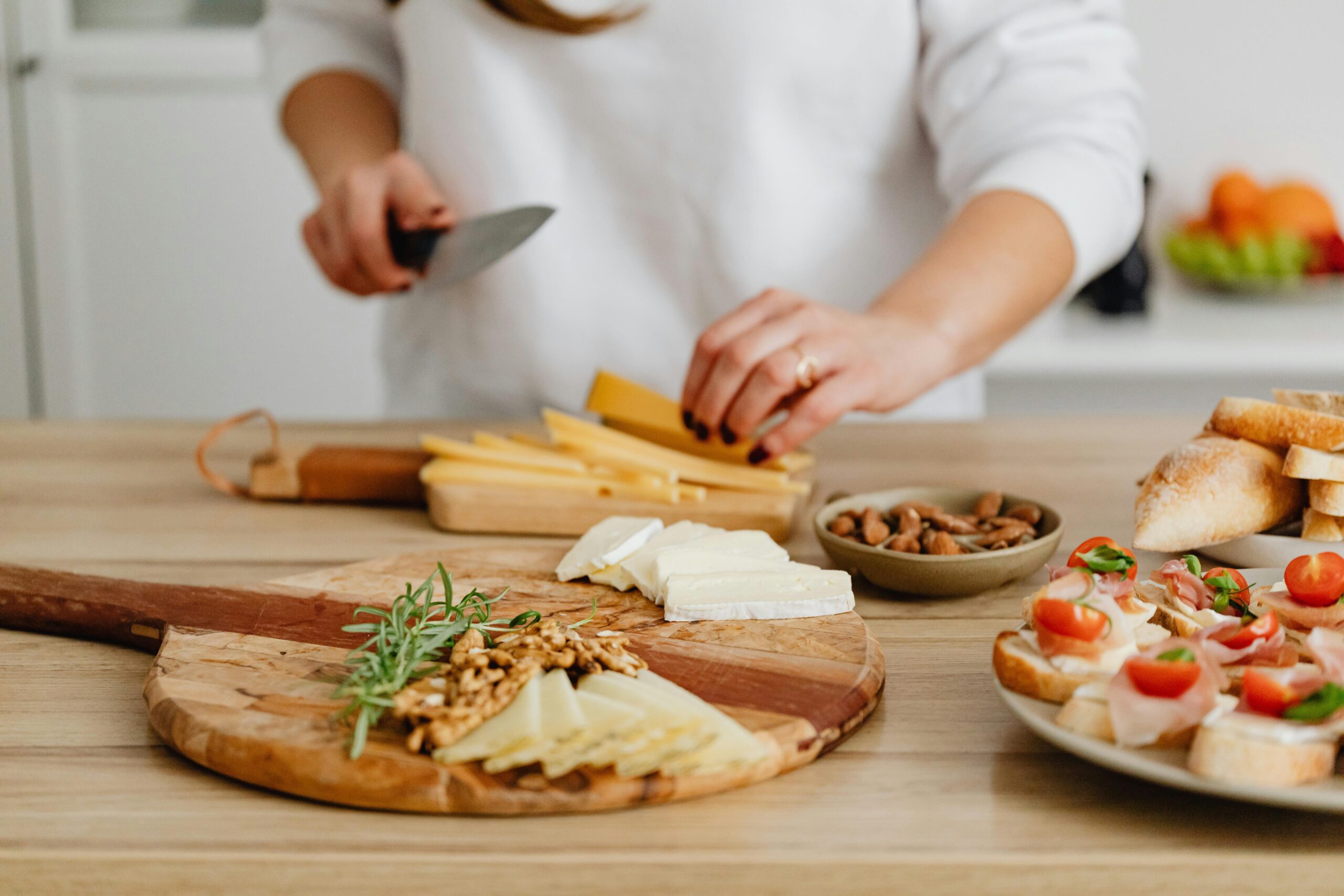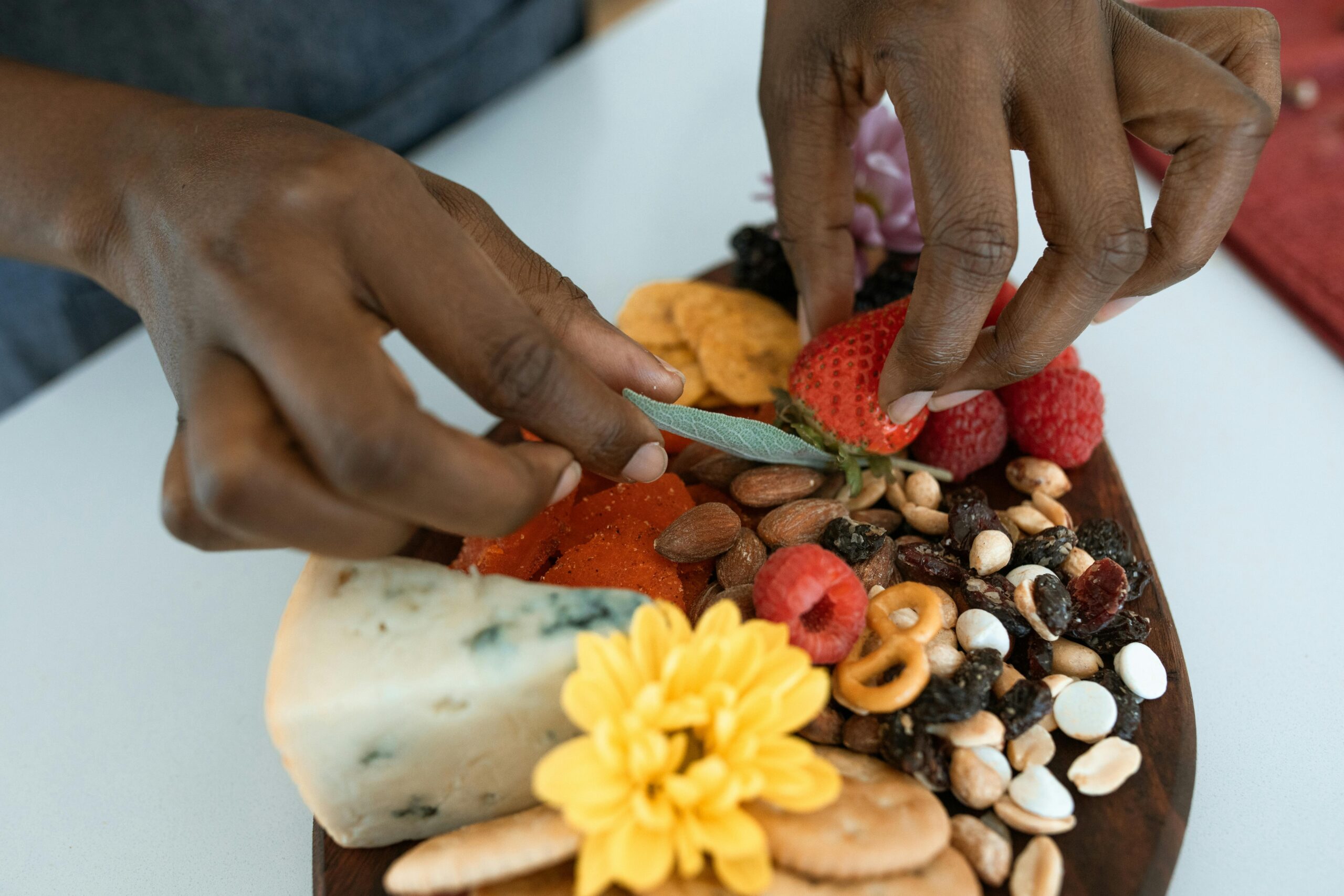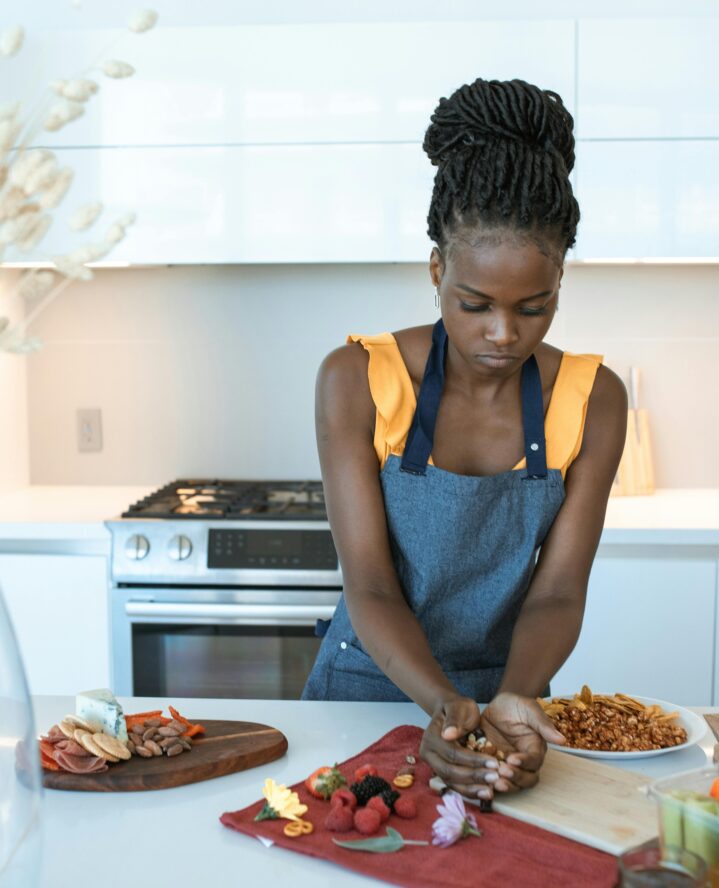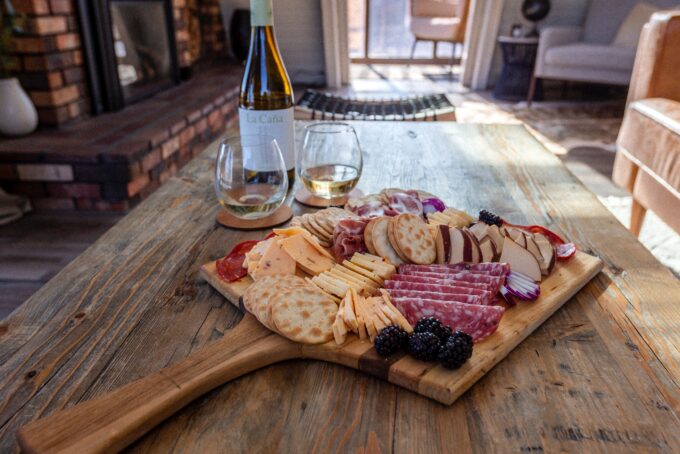Looking at an artisan charcuterie board is like looking at a work of art. But if you’ve ever tried making one, you know doing so is more like science.
Creating a beautifully arranged charcuterie board is about balancing flavors, textures, and visuals to create a visually stunning spread that tastes good. Whether you’re hosting a casual get-together or a fancy dinner party, a well-crafted charcuterie board can be the star of the show. Here’s how to build one that will keep your guests talking.
Begin with the board.
Some people just go with whatever serving platter they can find, but taking time to look for a nice, elegant board can make a big difference in how everything turns out.
Wooden boards, marble slabs, or even slate are all excellent to use when making a charcuterie because you can typically cut food on them without causing damage. Plus, they add a kind of natural, rustic element to the presentation, too.
When picking a board, make sure to pick one large enough to fit all your ingredients without making it look cluttered. As a general rule, the size of your board should reflect how many guests you have. For example, a larger board will give you more space for variety, but you can use a smaller one for a more intimate, curated selection.

Pick a variety of meats and cheeses.
No charcuterie board is complete without a selection of premium, cured meats and cheese. But the key is to aim for variety in texture and flavor. Here are some ideas:
Meat
- Pâté or terrine
- Prosciutto
- Soppressata
- Coppa
- Bresaola
Pro Tip: Part of what makes an artisan charcuterie board special is the presentation, so be sure to arrange the meats in a visually appealing way, such as by folding them into ruffles or rolling them into cones.
Cheese
- Brie
- Aged cheddar
- Gouda
- Blue cheese (i.e. gorgonzola)
- Goat cheese
To make a nice arrangement for your cheese, cut them into cubes or slices. But if you have spreadable cheese, you can just put a knife next to the platter for guests to help themselves.

Include fresh and dried fruits.
Fruit can be a nice palate cleanser in between bites of rich meat and cheese. And while fresh fruits like grapes, figs, and berries are fabulous choices on their own, dried fruits like apricots, dates, and cranberries have a concentrated sweetness and chewy texture that make them just as good. You could even try placing some freeze-dried berries on the board to add in a nice crunch factor while filling in any unwanted gaps.
Pro Tip: Speaking of filling in the gaps, rather than sprinkle your fruit around the board, try placing them in clusters so they take up more space. This will help create that fuller, more abundant look you’re going for.
Add some veggies.
Pickled or fresh vegetables add color and freshness. Here are some of the most popular ones to add to your board:
- Cherry tomatoes
- Baby carrots
- Gherkins
- Pickled onions
- Roasted peppers

Add some extra crunch.
To keep your charcuterie board interesting, add in ingredients with crunchy textures like nuts, pretzels, and crackers. Almonds, walnuts, and pistachios are typically the most popular nut choices.
For crackers, water and whole grain crackers are great to build with, while breadsticks or crostini are more for scooping up dips or soft cheeses.
Don’t forget the condiments.
Adding condiments to your charcuterie is important for a couple of reasons: they add flavor and they make your board look nicer. Garnishing your board can add that extra special touch, so don’t be afraid to decorate with some of these ingredients:
- Rosemary or thyme sprigs
- Edible flowers
- Honey
- Jam or fruit preserves
- Grainy mustard
- Olives

Arrange thoughtfully.
The general rule of thumb when arranging an artisan charcuterie board is to begin with larger items like cheese wedges and bowls of condiments, then fill in the remaining space with the rest of your ingredients.
You can get really creative with your presentation here, but keep in mind that you need a balance of colors and textures for the best result. But don’t worry about it being perfect; the rustic look is part of the appeal. So let your ingredients overlap slightly; it creates a more inviting, abundant look anyway.
popular posts
Entertaining

Essential Items for Hosting a Last-Minute Get-Together
by Melody Beuzelin | September 4, 2024
Spaces
Whether it’s luxury or ease, every area of your home should be as fabulous and unique as you.

Elevate Your Thanksgiving by Celebrating Outdoors
by Melody Beuzelin | October 14, 2024
Wow Your Guests With 10 Expert Tips For a Well-Crafted Charcuterie Board
by Kelsey Marie | August 30, 2023
FOLLOW ALONG ON INSTAGRAM
#homeandtexture
Find us on social for more home inspiration where culture, personal style, and sophisticated shopping intersect to help you create a home where you love to live.





